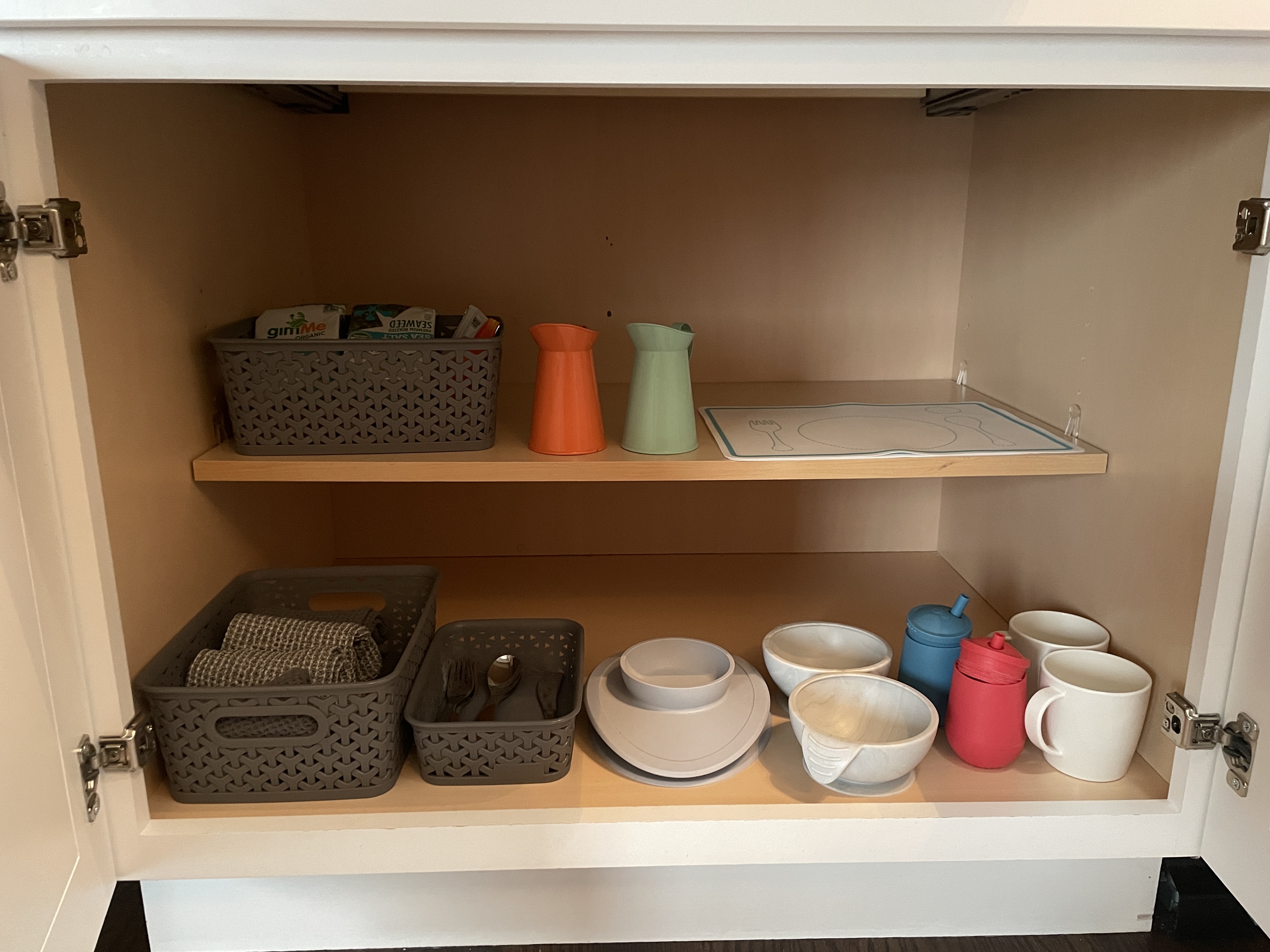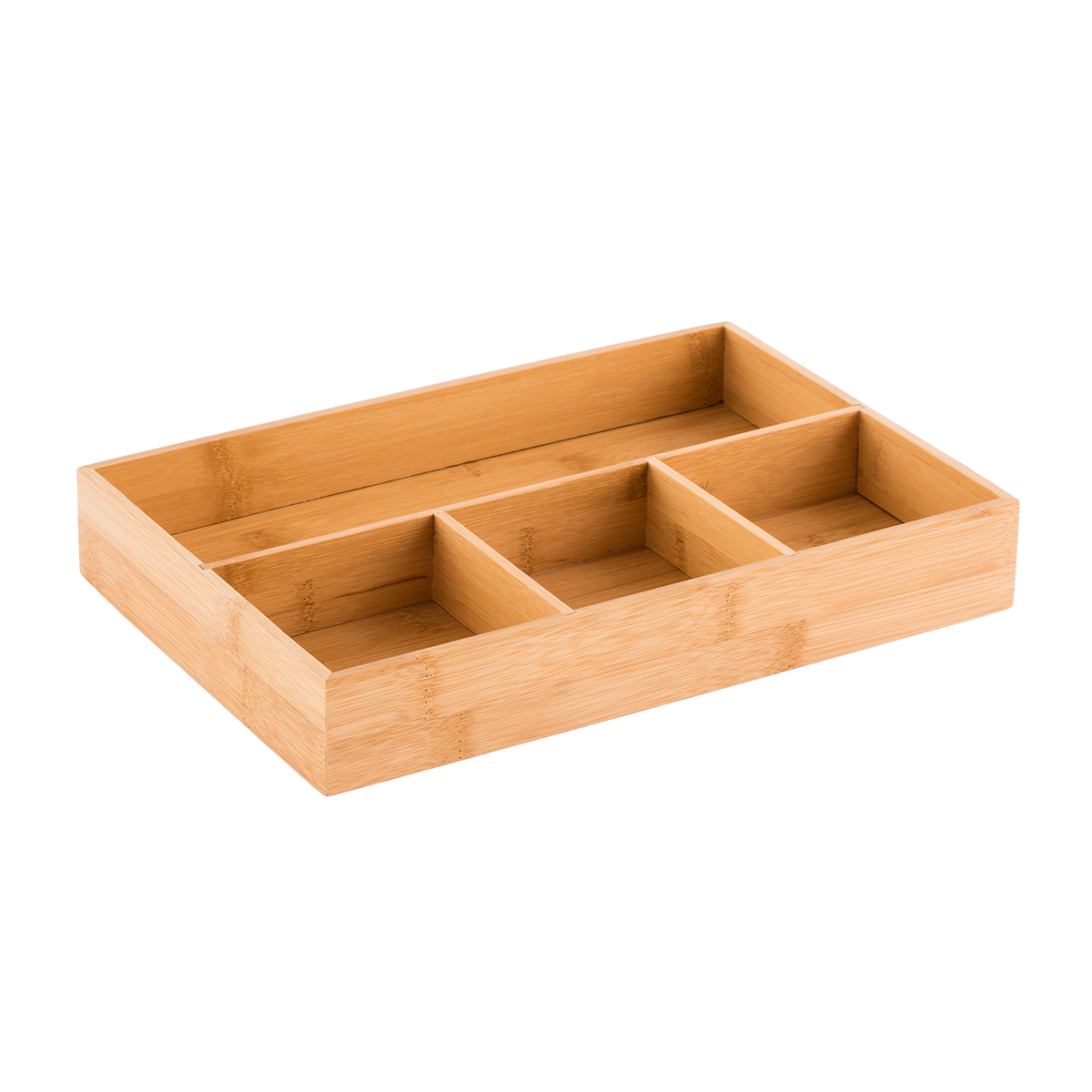The Montessori Philosophy, Adapted
Dr. Maria Montessori spent her life observing and teaching children and developed a philosophy that is child-centered to foster independence, confidence and love of life-long learning. My husband and his siblings attended Montessori elementary school 3 years – 8th grade. In our 20s, my husband and I worked at a Montessori school for after-school care and summer camps. He and I try to implement Montessori philosophy in our home with our 2.5 year old twins. But we don’t know everything, and Dr. Montessori’s philosophy has been twisted and adapted and even exploited online and at many so-called Montessori schools. So, I want to clarify before I begin my post: This is a Montessori-INSPIRED shelf and procedures to help your child become more independent and confident during meal time. It is not 100% Montessori Method. I try to use natural materials (wood, glass, stainless steel silverware) when I can. But sometimes… you just need to use silicone and plastic. Sue me.

Start With a Cabinet or Shelf Easily Accessible to your Child(ren)
First, you need to find a spot in your kitchen where you can store your child or children’s meal-time items. A cabinet that they can easily open or a shelf just their height is preferable. Everything should be within reach.

Use Baskets, Bins, and Organize Like With Like
You guessed it: Baskets, Bowls, Bins. That’s what you need to organize the small things like silverware, rags, and snacks. So find some baskets, bowls, and bins. And remember, they don’t need to be perfect!

A Table Just Their Size
Before your kids can set their table, sit down to eat, and then clean up, they need a table just their size. Of course, it’s not totally necessary, and children can sit at a big table. But it’s much easier to set a table that is their size. You can find child-size tables online or at stores. They don’t have to be wood, they don’t have to be beautiful, they don’t have to be Montessori, and they don’t have to be expensive. You can even use a short coffee table and stools!

Placemats
Placemats are important for helping your child remember the meal time procedure. It is a blueprint for where to put their plate or bowl, spoon, fork, sometimes knife (depending on the placemat), and cup. You can find a placemat online.

Pitcher to Self-Serve Water
These pitchers are plastic, but they get the job done. My children like to pour their own water into their cups for when they want more water. They often over-pour, but it’s all about practice and learning how to take care of yourself. They are learning self-sufficiency and it takes the pressure off of parents being their servants.

Cups, Bowls, Plates, Mugs
A bowl, a cup, a plate, a mug per child. Obviously I have silicone and plastic pictured here. Not super Montessori. But still small (just their size!) and accessible for them to reach and place on their placemat.

Rags & Silverware
Children need forks, spoons, and sometimes knives. I use stainless steel silverware and that has worked great since they were 9 months old. They’re children-sized, which is important for helping them use the silverware properly so they don’t become discouraged when that adult-sized fork pokes them or falls out of their hands.
When tools are made for their size, children are able to use them successfully, which instills confidence and encourages them to continue learning self-sufficiency.
When finished with their meal, children should put all the dishes and silverware into the sink or on the counter for clean-up. They should then get a rag, dip it in water (I put a bowl with hot water out for them to dip it in because they can’t reach the sink), and wipe down their placemat and the table.
Then, they can put the placemat back in the cabinet or on the shelf.
At a certain age, they can do the dishes and put away clean, dry dishes. For now, I have my children put their dishes on the counter and then I wash them and put them back into their cabinet. They’re only 2.5, so we are going slowly.

Snacks
I put a bin with “snacks for the day” in the cabinet as well, so they can start to choose when they want a snack rather than prodding me every time they want a snack. The idea is that they’ll start to learn self control when it comes to snacks… because once the snacks are eaten up, that’s it for the day. However, if it’s 1/2 hour before meal time, no snack. I am not sure this is really realistic, but I’ve read about it working online. We’re still figuring this one out.

So there you have it. Organize your shelf or cabinet as you wish, but those are the main items to have accessible for your children. A meal-time procedure would be as follows:
- GET PLACEMAT FROM THE CABINET/SHELF AND PLACE ON TABLE.
- PUT DOWN SILVERWARE, BOWL OR PLATE, CUPS.
- GET FILLED PITCHER OF WATER FROM PARENT, PLACE ON TABLE OR CHILD POURS WATER INTO THEIR OWN CUP.
- EAT!
- CLEAN UP! BRING EVERYTHING BUT PLACEMAT TO THE SINK OR COUNTER.
- WIPE DOWN PLACEMAT AND TABLE.
- SWEEP FLOOR.
- PUSH IN CHAIRS.
- GO PLAY!
And do it all again tomorrow. 🙂
The best way to keep your spaces clean, tidy, and organized is by reducing your stuff. Sure. We all know that by now, right? But sometimes, we…
Organizing is easy when you have few things and lots of space, which is why organizing my new kitchen was not difficult. So, there’s nothing to…
This Sunday I hosted Mother’s Day at my [small] apartment and there were many dishes that required multiple utensils—serving forks and spoons, regular silverware, spatulas, and knives….
One of the best parts of being a grown up is being able to enjoy a glass of wine with your friends without fear of your parents…








